If you’re worried about the carbon footprint of your heating and taking a suspicious, sidelong glance at your gas boiler, you’re not alone. There are plenty of households in the UK proactively looking to upgrade their heating to something more eco-friendly. But just where do you begin with such a big undertaking? We’ve rounded up the most carbon conscious heating solutions in the UK, all of which have a greatly reduced impact on the environment compared to traditional methods. So, let’s dive right in and take a look at the best options:

Ground source heat pumps
How do they work?
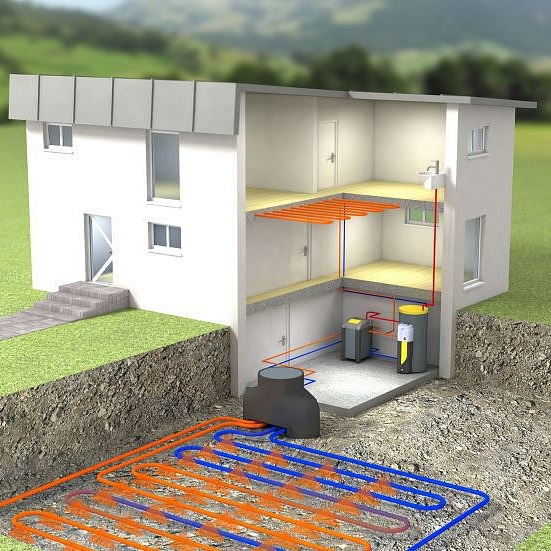 Ground source heat pumps work by using geothermal energy to warm the fluid inside a set of underground pipes. This heated fluid passes through to a compressor, which pressurises the liquid and raises its temperature, transferring the warmth to your property. When manufacturers say ‘heat pumps are over 300% efficient’, it sounds like the type of boastful claim you’d expect from an overzealous marketing team, but this statistic is, in fact, accurate. They’re able to reach this level of efficiency because for every 1kW of energy they use, they produce 3 or more units of heat.
Ground source heat pumps work by using geothermal energy to warm the fluid inside a set of underground pipes. This heated fluid passes through to a compressor, which pressurises the liquid and raises its temperature, transferring the warmth to your property. When manufacturers say ‘heat pumps are over 300% efficient’, it sounds like the type of boastful claim you’d expect from an overzealous marketing team, but this statistic is, in fact, accurate. They’re able to reach this level of efficiency because for every 1kW of energy they use, they produce 3 or more units of heat.
Will they suit my property?
Ground source heat pumps are fantastic at what they do but their biggest flaw is that they highly site specific. A geological survey could well reveal that your property isn’t suitable for this kind of heating, and that’s even if you’ve got the considerable space required to bury the pipe network. Ground source heat pumps can be a good fit for commercial properties with a lot of space to play with but tend not to suit domestic properties unless they have surrounding land or a large garden. If you can have a ground source heat pump installed, you’ll find that they provide reliable heat throughout the year because the temperature of the ground doesn’t fluctuate. It’s a hefty investment that can run upwards of £20,000 but, as a long-term commitment to green heating, many see it as worth the effort.
Pros & cons for ground source heat pumps
|
Pros |
Cons |
| - Outstanding efficiency – generates at least 3x more heat for every unit of energy - Consistent heat output throughout the year - Can be paired with self-generated energy for zero carbon heat - Provides cooling & heating - Minimal maintenance - Heats your home & your water |
- Prohibitively expensive - Requires a large amount of ground to lay pipework - Works only in very specific locations - Lower water temperature means radiators must be larger to compensate - Works best with new builds rather than retrofitted |
Air source heat pumps
How do they work?
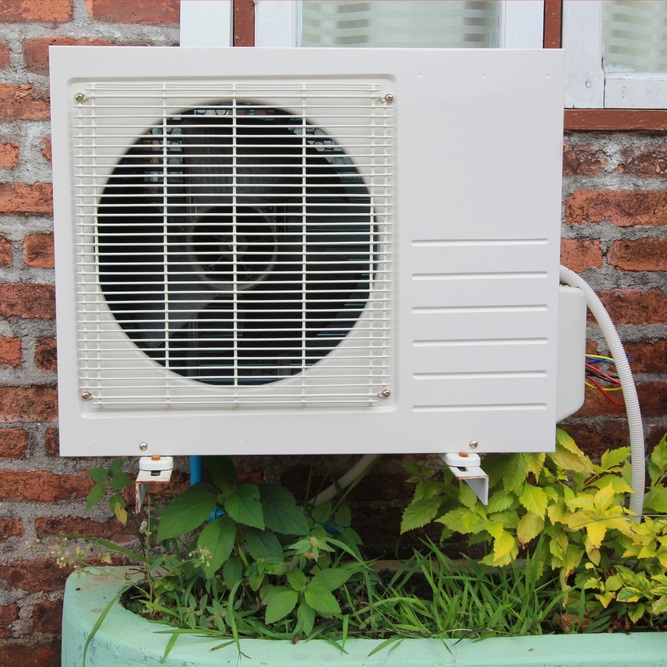 Air source heat pumps operate on a similar principle to ground source pumps, except they’re pulling heat energy from the air in order to convert it into warmth. Air-to-water heat pumps are able to create heat even in -0 °C conditions to provide heated water for your property, though their efficiency does drop with lower outdoor temperatures. Heat pumps have a lower operating temperature compared to a gas boiler so radiators have to be oversized in order to produce the same output. This does mean, however, that it can be a safer option for homes with younger kids as the radiators won’t be quite so hot to the touch.
Air source heat pumps operate on a similar principle to ground source pumps, except they’re pulling heat energy from the air in order to convert it into warmth. Air-to-water heat pumps are able to create heat even in -0 °C conditions to provide heated water for your property, though their efficiency does drop with lower outdoor temperatures. Heat pumps have a lower operating temperature compared to a gas boiler so radiators have to be oversized in order to produce the same output. This does mean, however, that it can be a safer option for homes with younger kids as the radiators won’t be quite so hot to the touch.
Will they suit my property?
Air source heat pumps are much less expensive and space hungry compared to their ground source counterparts, which is already a huge plus point in their favour, but there are some things you’ll need to consider before investing. The fact that they operate on a lower temperature and work less well in the cold means that they sometimes won’t be able to provide reliable heat in winter. Homes that are less insulated may find that a backup heating system is required to provide supplementary warmth during a particularly chilly spell. Air source heat pumps do have fans that can be noisy when in operation but a good installer will be able to find a location for the unit that won’t disturb you or your neighbours. An air source system can cost over £15,000 but its efficiency can make a significant dent in your home’s carbon footprint, especially if you’re currently using a solid fuel heating system.
Pros & cons for air source heat pumps
|
Pros |
Cons |
| - Outstanding efficiency – generates at least 3x more heat for every unit of energy - Can be paired with self-generated energy for zero carbon heat - Provides cooling & heating - Minimal maintenance - Heats your home & your water |
- Expensive, though less so than ground source heat pumps - Efficiency fluctuates with outdoor temperature - Lower water temperature means radiators must be larger to compensate - Can be noisy to run - May not provide effective heat in less insulated properties |
Infrared panels
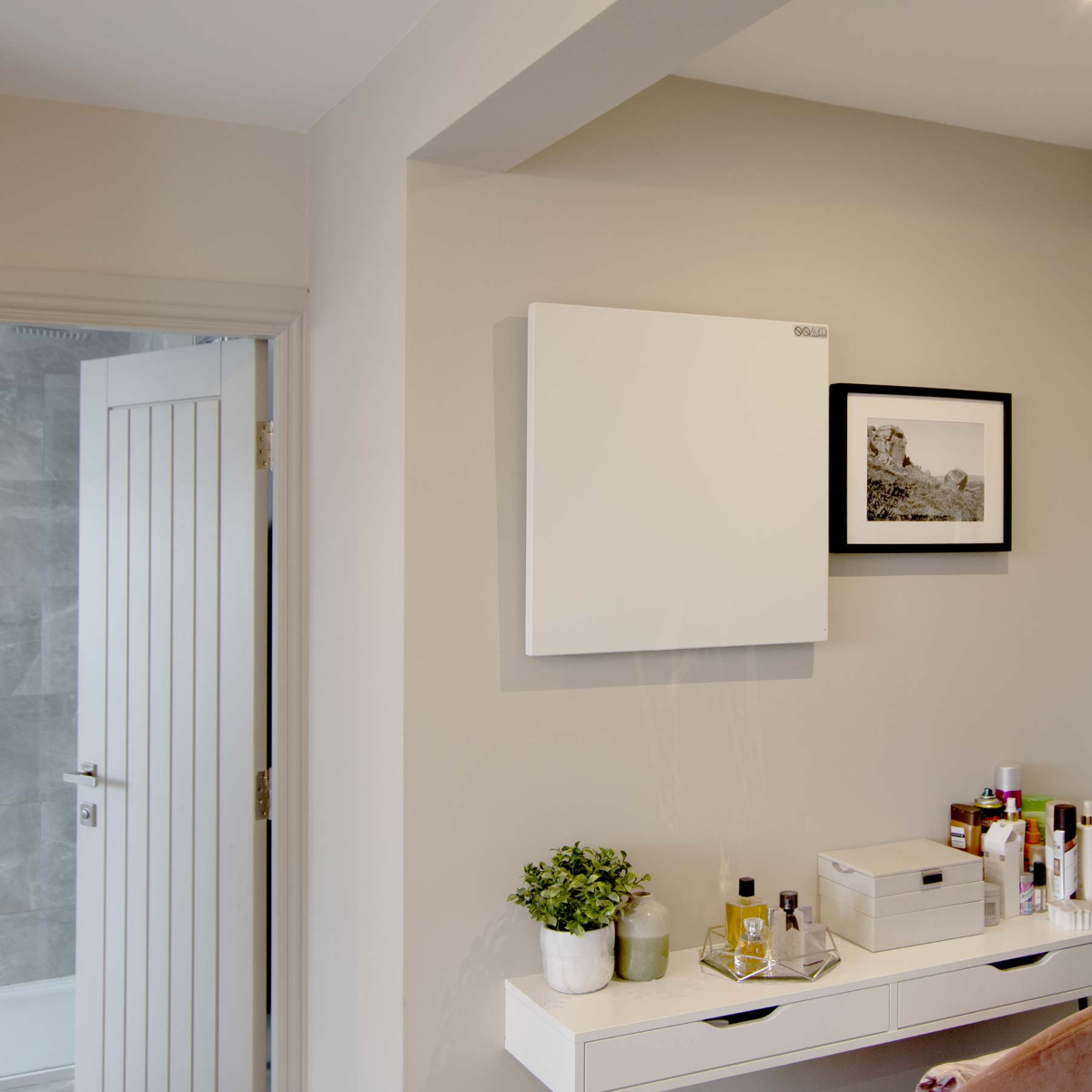 How do they work?
How do they work?
Infrared panels warm the fabric of your building rather than the air volume, providing a deep and long-lasting heat that isn’t lost to draughts. The fact that you lose less heat overall with radiant heat allows infrared panels to warm rooms using a lower wattage compared to other electric heating methods, making them very cost effective to run. They do take longer to warm up rooms from cold because they’re essentially heating the mass of your property, but once interiors reach temperature, the heaters only need to switch on occasionally to keep them at the right heat level.
Will they suit my property?
Unlike heat pumps and many other forms of low carbon heating, infrared panels are suitable for virtually all domestic properties. Their suitability isn’t site specific, nor do they take up much room, so they’re far more accessible to the average homeowner. Though their efficiency makes them more eco-friendly to run, infrared panels won’t be truly green unless they’re paired with renewable energy; however, they can be used with a green tariff to at least offset the amount of fossil fuel power in the grid. Infrared panels have a sleek and attractive aesthetic that makes them a good fit for modern properties and have prices to suit every budget, so they’re a great option if you’re working within a tightly financed project.
Pros & cons for infrared
|
Pros |
Cons |
| - Highly efficient, heats spaces with less wattage - Can be paired with self-generated energy for zero carbon heat - Very long product lifespan with no maintenance - Slimline, attractive & unobtrusive - Quick & easy to install - More freedom of placement - Suitable for virtually all properties |
- Powered from the grid, they would still be using fossil fuel energy, though this will decrease over time - Needs more careful line-of-sight placement to be effective - Requires separate water heating |
Electric radiators
How do they work?
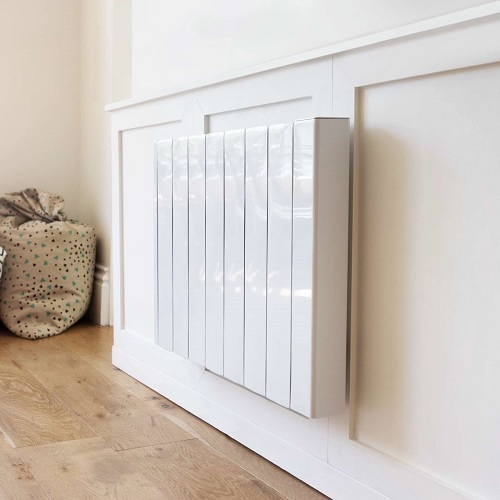 Electric radiators provide the same kind of heat as a central heating radiator, except they use power from the mains rather than heated water from a boiler. They’re standalone products that don’t need pipework or bleeding, and because of that, offer a much greater freedom of placement for your heating. The controls for electric radiators are in-built into each unit, making it easy for you to manage your heating room by room, saving energy when spaces aren’t being used. However, if you do prefer centralised control, WiFi radiators offer this feature using an app.
Electric radiators provide the same kind of heat as a central heating radiator, except they use power from the mains rather than heated water from a boiler. They’re standalone products that don’t need pipework or bleeding, and because of that, offer a much greater freedom of placement for your heating. The controls for electric radiators are in-built into each unit, making it easy for you to manage your heating room by room, saving energy when spaces aren’t being used. However, if you do prefer centralised control, WiFi radiators offer this feature using an app.
Will they suit my property?
Electric radiators can be installed in pretty much any property and that’s one of their biggest strengths. You won’t need a survey of your home or garden to install them and your electrician will be able to wire them in quickly and easily. They require very little maintenance over their lifetime, which means there’s no need for annual checks and breakdown cover as you would expect with a wet system. As with infrared panels, they’re greenest when paired with self-generated energy but you can use them with a green tariff as an easy way to make your heating kinder to the planet. Designed with their controls built in, electric radiators let you manage your energy use to a much higher degree because you can create a separate heating routine for each area of your house. Factor into that hour-by-hour programming and you’ve got a really environmentally friendly heating system that keeps energy use to a minimum. Electric radiators are highly affordable and come in a vast array of styles and sizes to suit any home. If you have a solar array, you can read more about how to pair electric radiators with solar PV here.
Pros & cons for electric radiators
|
Pros |
Cons |
| - Very efficient, heats room-by-room for minimal energy use - Can be paired with self-generated energy for zero carbon heat - No ongoing maintenance - Quick & easy to install - More freedom of placement - Suitable for virtually all properties |
- Powered from the grid, they would still be using fossil fuel energy, though this will decrease over time - Requires separate water heating |
Biomass boilers
How do they work?
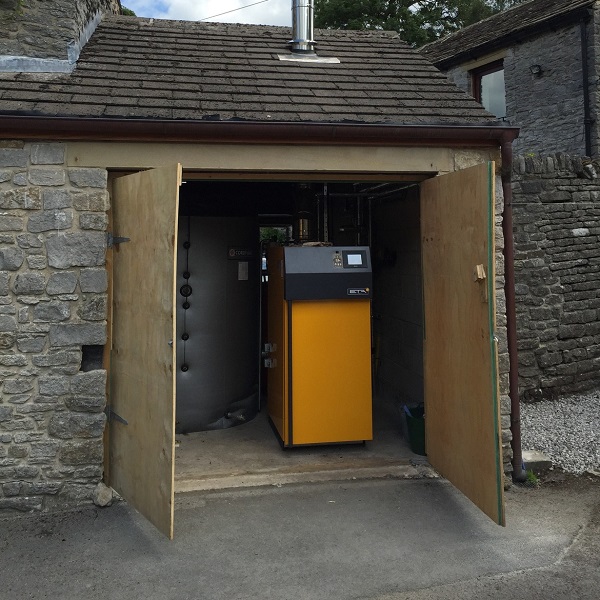 Biomass boilers are carbon neutral at point of use because they use pellets made of plants and organic matter to create heat. In essence, though they release CO2, the same amount is reabsorbed by plant life, which eventually is grown and harvested for pellets, starting the whole process over again.
Biomass boilers are carbon neutral at point of use because they use pellets made of plants and organic matter to create heat. In essence, though they release CO2, the same amount is reabsorbed by plant life, which eventually is grown and harvested for pellets, starting the whole process over again.
Will they suit my property?
A biomass heating system can be great for off-grid and rural homes, especially if they’re already reliant on fuel sources like coal and oil, because wood pellets are more sustainable and much easier to produce. If you have access to your own wood, you can even source your own fuel without having to rely on deliveries, making it an even greener way to heat your home. The main reason why it hasn’t seen more widespread adoption is because it can be quite costly to fit – upwards of £15,000 depending on the model – and also requires a considerable amount of room to house the boiler. In many instances, a biomass boiler will need a whole room or outbuilding to itself, and that’s not even including storage for fuel. Some homes will be able to make use of a garage to house this type of heater, but for the average terraced property, it might not be the best option.
Pros & cons for biomass boilers
|
Pros |
Cons |
| - Carbon neutral heat source - Fuel pellets are made from organic matter that would otherwise go to waste - Uses a more sustainable fuel compared to oil & gas boilers - Can be a good alternative for off-grid homes - Heats your home & your water |
- Boiler takes up a lot of room & requires storage for fuel - Requires quite a high initial investment - Needs regular upkeep - Fuel pellets can be affected by damp - Requires fuel to be delivered to property - Quality of fuel can vary |
Finding the right solution for your home
This has just been a quick top-down look at the main options available for green heating but if you want to know more about our energy-efficient electric radiators and infrared panels, we’re here to help. Give our Sales team a call on 0330 300 4444 for more information or browse our site for the very latest heating technology that can help you on your way to eco-conscious living.
Image credits:
https://birdshill.wales/news/air-source-heat-pumps-or-ground-source/
http://www.energyclever.com/services/biomass






